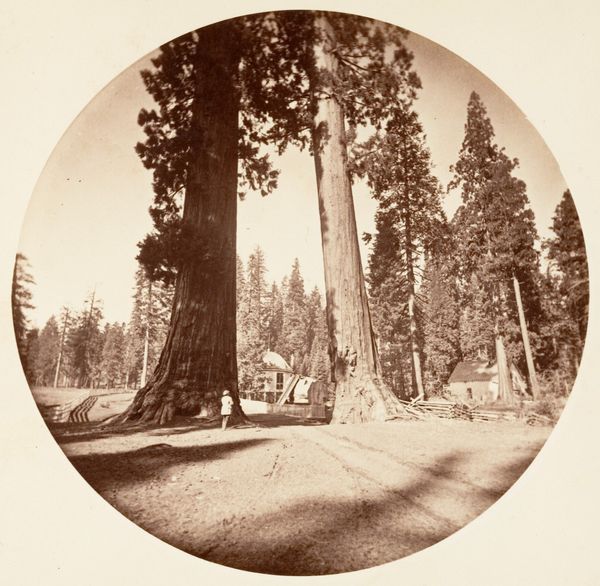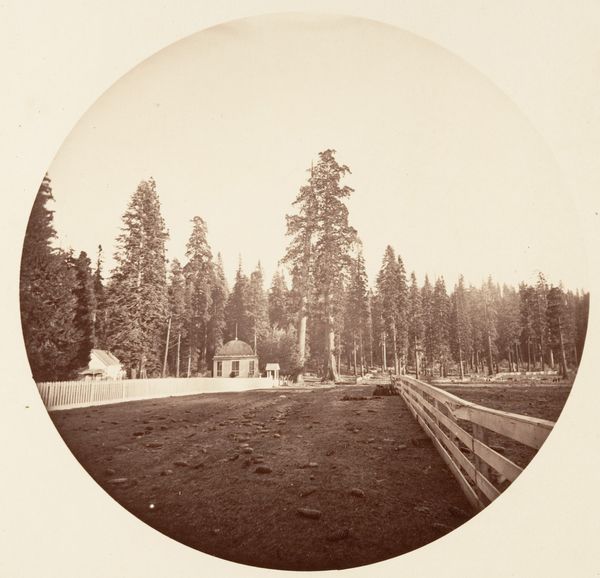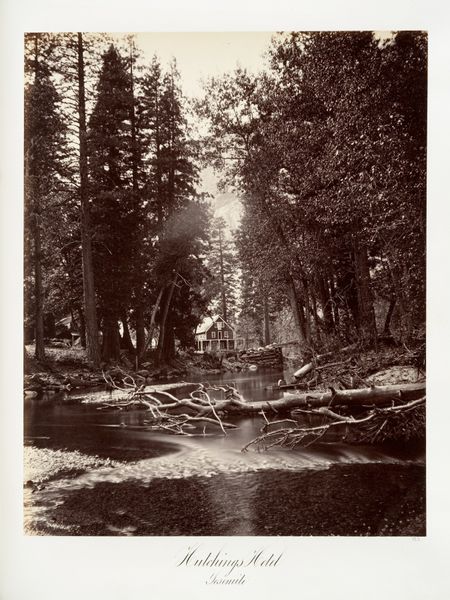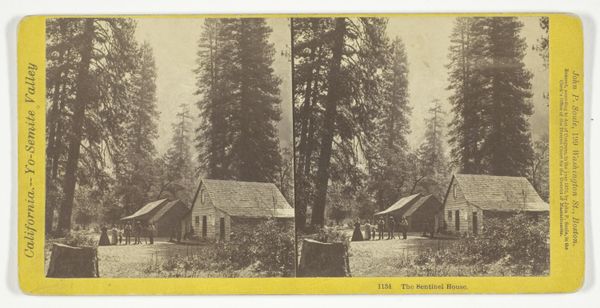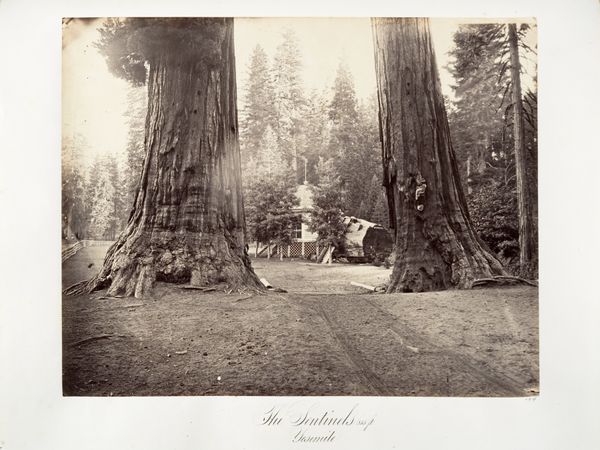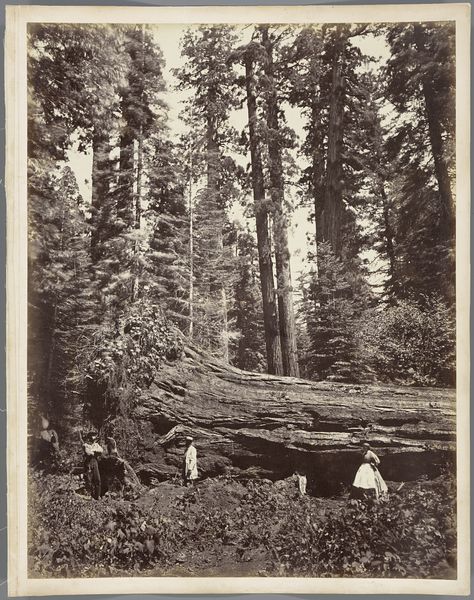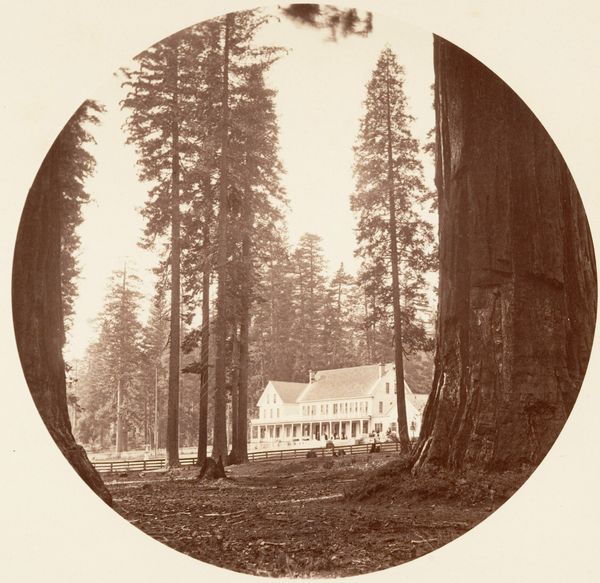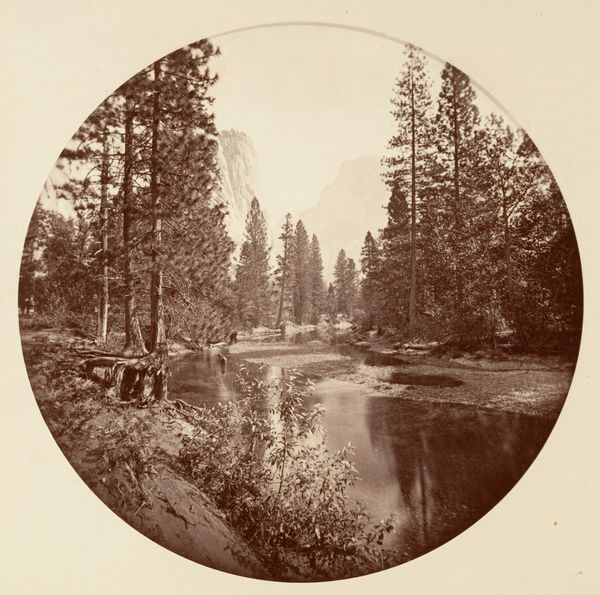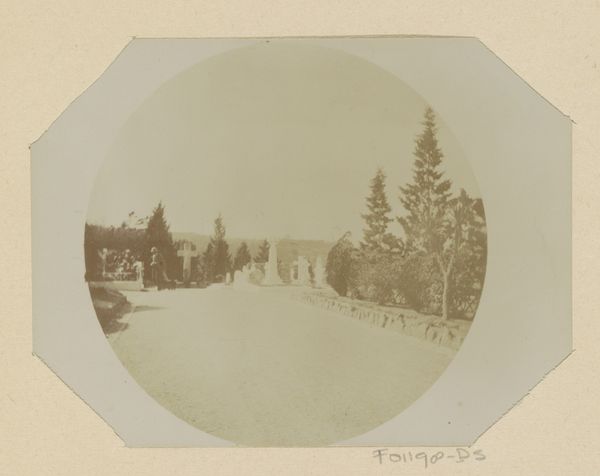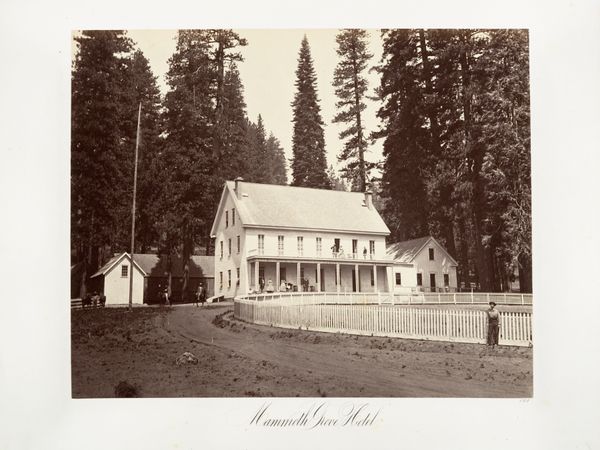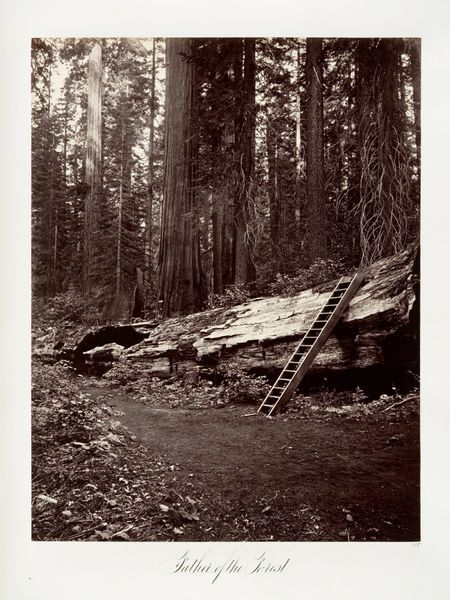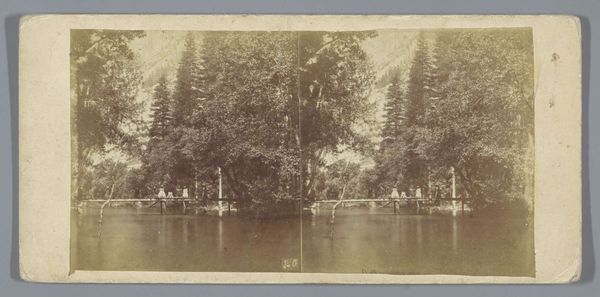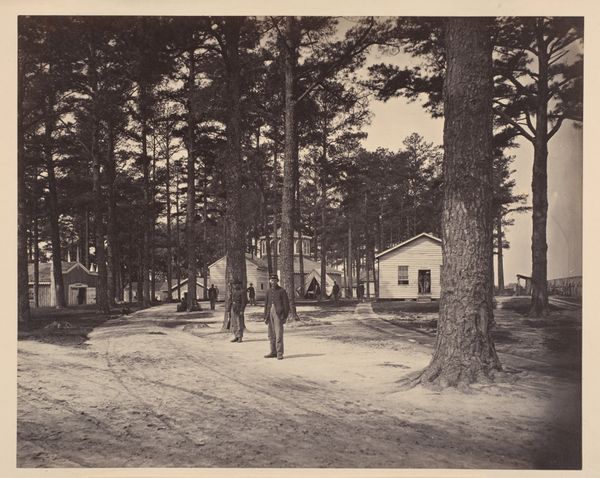
photography, architecture
#
landscape
#
photography
#
forest
#
arch
#
agriculture
#
architecture
Copyright: Public Domain
Curator: Here we have Carleton Watkins' "The Sentinel, 315 feet," a mammoth albumen print made between 1865 and 1866, showcasing the towering sequoias of California. Editor: The scale is just… breathtaking. You really get a sense of how small we are against these giants. There's almost a sacred feeling about it, like entering a cathedral of trees. Curator: It is evocative of the sublime, isn't it? These trees tap into ancient archetypes: endurance, strength, even a connection to primordial wisdom. Note how the small structures built by humans appear diminutive, symbolizing our relationship to the natural world. Editor: Absolutely. It is hard not to also think of its commercial value at that time. Watkins captured the vastness and natural resources, but his work also participated in a much larger movement of resource extraction in the American West. The construction of railroads, the harvesting of timber... these photographs romanticize nature while enabling its consumption. Curator: True, that tension is always there, isn't it? Watkins' perspective invites us to revere this majestic “sentinel”, but even then the encroachment of civilization looms in the frame. The fence and constructed gazebo are visual signifiers that man attempts to subdue nature. Editor: Speaking of the material, this albumen print is fascinating. Imagine the meticulous darkroom work necessary to capture and reproduce such detail back then. It underscores that landscapes like this one depend on a whole system of labor. Not only Watkins traveling out to take the photo, but workers back in the studio treating and printing these plates to sell widely to make money. Curator: Precisely, and this photographic act solidified the West within the national imagination, but in what way? Was it documenting, idealizing, or commodifying nature? Editor: It's probably some strange combination of the three. Ultimately the power of this landscape photograph hinges on human activity and all sorts of exploitations – timber, capital, tourism, art markets. Curator: So, more than just a depiction of the natural world, it reflects how intertwined the cultural is within its rendering. Editor: Yes. And it invites a critical look at how we both cherish and alter our environment even today.
Comments
No comments
Be the first to comment and join the conversation on the ultimate creative platform.
